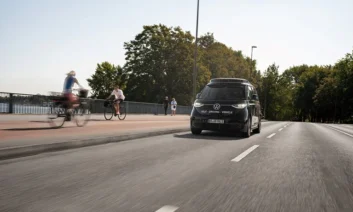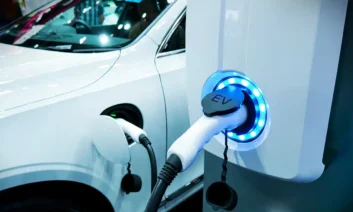The 2026 Safety Playbook: a catalogue of actions for your fleet
The 2026 Safety Playbook, laid out below, is a catalogue of driver and fleet safety actions. It is distilled from the best of the best: testimonials of the candidates for the Fleet Europe Awards (which will close the Fleet Europe Days 2025, 22-23 October in Luxembourg). May this practical catalogue – based on real initiatives with real results – inspire fleet managers like you make security a core strength of your operations.

Together, those testimonials revealed a clear path forward: integrate data, embed safety in design, build capability, and create cultures where safety is part of everyday decision-making.
Three shifts
Across the industry, three major shifts are redefining fleet safety.
1. Data-led risk management
Telematics has evolved from pilots to platforms. Today’s leading fleets use near-universal telematics fitment, driver scoring, and exception dashboards. Monthly safety councils translate data and alerts into concrete actions, closing the loop between insight and intervention.
2. Safety by design
Risk control is increasingly being built into the vehicle itself. Minimum safety specifications – such as Euro NCAP ratings and advanced driver-assistance systems (ADAS) – are now standard requirements. Purpose-built LCV fit-outs push risk control upstream, before the vehicle even hits the road.
3. Capability and culture
The best safety programmes are not just about technology; they include people. Structured coaching, role-specific training (covering EVs, LCVs, winter driving, and fatigue management), and consistent leadership communication make safety ‘how we operate’, not just a temporary campaign.
Initiative catalogue
Telematics and analytics
Fleets are embracing full telematics deployment across cars and LCVs, using driver scorecards and real-time event alerts for speeding, harsh driving, and seatbelt compliance.
Risk dashboards are often segmented by country or business cluster, accompanied by weekly ‘top 10’ exception lists with named owners and due dates.
Where lawful, in-vehicle cameras support post-incident reviews and coaching, backed by clear privacy and data retention rules.
Advanced journey risk analytics uses geofencing to identify high-risk areas, highlight night or weather-related hazards, and optimise routes.
Many fleets are also automating first notification of loss (FNOL) processes to accelerate claims handling and strengthen root-cause learning.
Driver capability and coaching
Best-in-class fleets provide structured onboarding and annual refresher training, with more frequent coaching for high-risk drivers.
Event-triggered one-to-one coaching sessions and micro-learning nudges, delivered through mobile apps or email, help maintain engagement.
Specialist modules address topics such as EVs (charging, regenerative braking, winter range), LCVs (load securing, reversing), fatigue management, and seasonal driving challenges.
Policy and governance
Update global safety policies, supported by local addenda; define clear expectations, with a zero-tolerance stance toward critical breaches.
Licence and eligibility checks are routinely conducted, alongside strict mobile-device policies that balance sanctions with positive incentives.
Standardised incident investigation frameworks, such as five-why or root cause analysis, ensure that corrective and preventive actions are consistently applied.
Vehicle standards and specification
Many fleets now mandate a 5-star NCAP rating where available, and require ADAS features such as autonomous emergency braking (AEB), lane support, reversing aids, intelligent speed assistance (ISA), and blind-spot monitoring.
LCVs are fitted with robust safety equipment: bulkheads, racking, restraints, high-visibility markings, and cameras.
Tyre strategies align with geography and climate, using winter or all-season tyres as needed, while monitoring tyre pressure and tread for wear and tear.
These safety requirements are locked into RFx and vehicle ordering processes to ensure they are non-negotiable.
Culture, communication, and recognition
Culture change is reinforced through visible and frequent communication. Safety weeks, toolbox talks, leadership videos, and monthly “learning from incidents” sessions keep safety front of mind.
Gamified challenges help reduce risky driving behaviours like speeding and harsh braking, while standards are extended to contractors and grey-fleet drivers to ensure consistency across all vehicle users.
Measurement and targets
Effective measurement uses leading indicators such as coaching completion rates, open action items, and near-miss reporting.
Outcome-based KPIs – such as preventable collision rates, severity indices, lost-time injuries, and insurance cost per vehicle – track tangible results.
Quarterly board-level KPI reports feature trend lines, hotspot maps, and a summary of the top corrective actions taken.
E-learning
To sustain capability growth, fleets are turning to structured learning ecosystems. Many have introduced comprehensive curricula for fleet leaders and local safety champions, focusing on risk management, EV safety, and telematics performance.
E-learning academies deliver bite-size modules, quizzes, and certifications, with refresher frequencies tailored to risk profiles.
Peer circles and benchmarking sessions allow managers to share dashboards, case studies, and playbooks.
Best-practice libraries provide ready-to-use templates, RFx safety specifications, and coaching scripts.
A key enabler of this collective learning will be the International Fleet Managers Institute (IFMI), which aims to deliver consistent safety knowledge at scale across regions.
Your checklist
Here’s a checklist to get started quickly with your journey towards best-in-class safety conditions.
Mandate telematics across all active vehicles and publish weekly exception lists with assigned owners.
Lock safety specifications (NCAP ratings, ADAS, and LCV fit-outs) into every RFx and order.
Establish risk-based coaching programmes, triggered by driving events and tracked for completion and recurrence.
Codify EV safety standards, including charging protocols, winter practices, and energy-efficient driving habits.
Enrol teams in IFMI to launch e-learning paths, join peer circles, and access best-practice templates.
Close the loop: ensure every preventable incident is logged with a corrective action and a due date.







